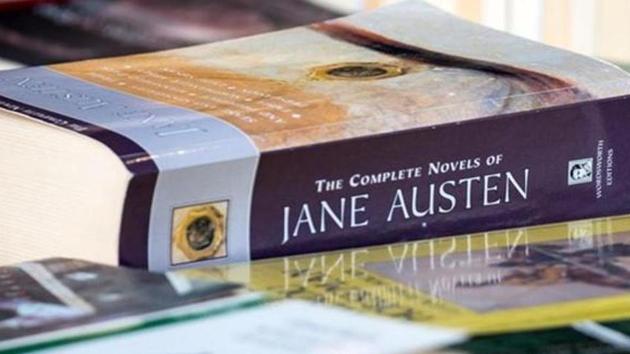Jane Austen to star in Bank of England exhibition along with Wodehouse, Dickens
On the bicentenary of her death, British novelist Jane Austen will be part of an exhibition that features many other writers either preoccupied with money or connected to the bank, like PG Wodehouse, George Eliot and Charles Dickens.
Jane Austen is not just the heroine of the new £10 note, to be unveiled on July 18 on the 200th anniversary of her death , but also the star of an exhibition on the literary connections of the Bank of England.

“Jane Austen’s novels are not taken up with chit-chat about bonnets in carriages, as some people who haven’t read them think. She was very well aware of the value of money, and it is a major theme in her work,” the exhibition’s curator, Jenni Adam, said.
“She writes about marriage not as empty romance, but as the key to economic stability for women. She never married and for much of her life she had almost no money to call her own – and when her father died she and her mother and sister faced a truly precarious existence, staying basically with whoever would have them.”

One of the objects Adam considers most poignant is a ledger showing Austen’s deposits in her own account at Hoare’s bank. When she finally began to earn some money from her writing, she invested it prudently – having witnessed the shock and disgrace of the failure of her brother’s bank – in the Bank of England’s “four per cent stock”. The ledger records her depositing the interest on her stock. She made three deposits of £15 each, but never lived to enjoy any of the money – the first withdrawal was made by her sister Cassandra to help pay for her funeral.
The £10 note will feature a quote from Pride and Prejudice , “I declare after all there is no enjoyment like reading” – and a portrait of Austen based on the image commissioned by her brother as a frontispiece for the books, based in turn on the only universally agreed life portrait – despite many recent claimants – a fond but amateurish sketch by her sister.
The exhibition, which opens at the Bank’s museum on 19 July, features many other writers either preoccupied with money or connected to the bank, including Kenneth Grahame, creator of The Wind in the Willows, who passed his exams to join the bank staff at the age of 19 and stayed for 30 years.

Grahame’s career included an episode that might have given pause to the many thriller writers who have used the Bank as a setting. In 1903, a man demanded to see the governor and instead met Grahame, who was invited to choose one end of a rolled document. He evidently chose the wrong end as the man then fired three shots at him, missing each time until Grahame managed to overpower him and lock him in a waiting room.
PG Wodehouse lasted just two years at the nearby Hongkong and Shanghai bank. Charles Lamb, who worked at the East India, called the red ink he used “clerks’ blood” in a letter to Coleridge, and in the vast archives of the bank Jenni Adam has found an enormous stoneware ink bottle, streaked with alarmingly bloody stains.
The original art work will be on display for one of Austen’s predecessors on the tenner, Charles Dickens, featuring a cricketing scene from The Pickwick Papers, which also includes a visit to the Bank of England. Dickens, having known real poverty in childhood and seen his father imprisoned for debt, was very careful with money all his life, drove fierce bargains with publishers, and featured many foolish spendthrifts in his books including Mr Micawber who also lands in a debtors’ prison.
Adam is particularly impressed by the financial acumen of George Eliot – “she obviously took very good advice and made really excellent investments” – and will display the £1,000 note she signed as a souvenir when she visited the bank in 1874, having achieved the status – a woman of independent means – that Austen’s heroines longed for.
Follow @htlifeandstyle for more



